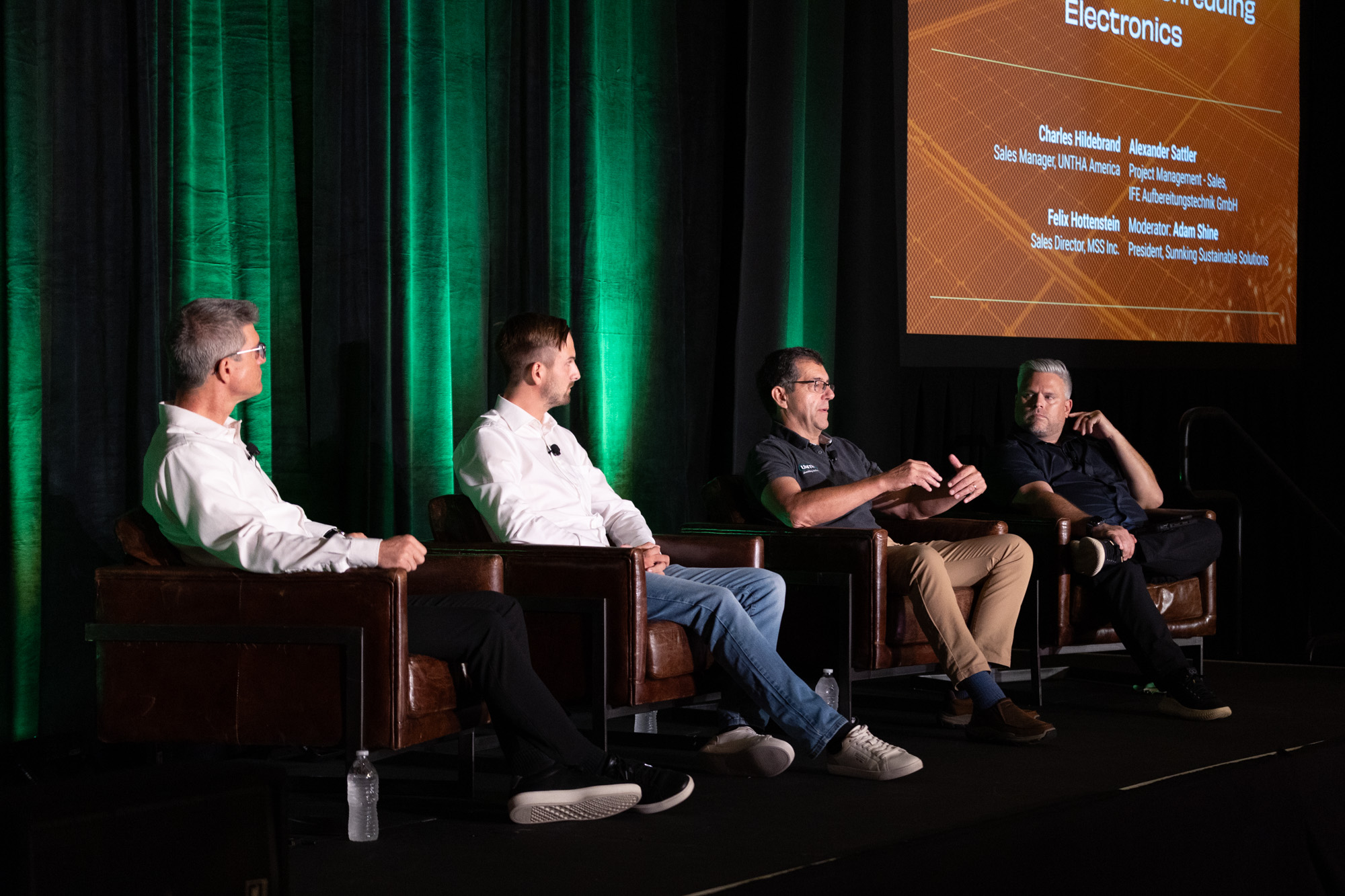
A crucial early step after deciding to incorporate a shredder is to determine what materials a company wants to shred. | Big Wave Productions/Resource Recycling
Evolving technology in electronics shredding can help make value recovery more efficient and profitable, but there are several considerations companies must factor in before investing in new equipment, panelists said at the recent E-Scrap Conference.
For example, a company may not have enough volume to send to a primary refiner, but there are plenty of buyers for shredded material, said moderator Adam Shine, president of Sunnking Sustainable Solutions. And although the U.S. has no primary refiners, secondary refiners can refine the shredded material and bundle it with other volumes to send to a primary refiner.
When Sunnking invested in shredding equipment, Shine said, “our values went from very low to quite a bit higher, and the cost to shred was far less than we anticipated because obviously most of the work was being done by equipment and not people.”
The first step is to determine what type of machine is needed for the company’s materials, said Charles Hildebrand, sales manager for the Americas for Austria-headquartered UNTHA. For example, a two- or four-shaft shear shredder provides a clean cut and “gives a good particle,” he said.
The popular four-shaft version provides material screening, so it can recirculate material and re-shred it to a defined particle size, making it ideal for separation, Hildebrand said.
UNTHA has found single-shaft shredders are well-suited to most electronics and to nonferrous materials, he said, plus they can handle heavier materials than a quad shaft or a shear shredder can, “just because the cutting system is so robust.”
He added, “It’s good to talk to different manufacturers of different technologies, but it’s also really good to know what you want to shred, because there are sweet spots for each of the different technologies.”
Mobile shredders may be a good all-around option for companies with varying needs, Hildebrand said, though their flexibility and self-contained nature come at a price. However, mobile shredders simplify reconfiguring a system, he said: “If you decide that you want to change it, you just move it to wherever you want to put it.”
In addition, permitting may be different because the machine is not considered a permanent installation, he added. And “if you decide you don’t want to be shredding electronics, you’ve got a shredder that can go somewhere else.”
Nevertheless, perhaps the most impactful stage of shredding is pre-shred sorting and disassembly, to help reduce contamination and result in a higher quality product, said Hildebrand. “If you don’t have to shred your bromated black plastic with your circuit boards, don’t.”
Alex Sattler, sales and project manager for the Americas at IFE Material Handling, said an eddy current separator is ideal for removing aluminum, using a magnet drum to separate ferrous and nonferrous metals.
Eddy current separators are effective at a low price point, added Felix Hottenstein, sales director at optical sorter company MSS.
Nevertheless, a major risk inherent to shredding is the risk of battery-related fires. “Whether we like it or not, all of us are in the battery business,” Shine said.
Looking ahead, AI is likely to become more prevalent in processing electronics after mechanical sorting but before shredding, the panelists agreed.
Although robotics can be useful in some instances, AI technology is better suited for extracting very small particles and is faster, while extracting more value from e-scrap, said Hottenstein. For example, AI can recover residual metals such as stainless steel and wire from e-plastics that made it past separator magnets, he said.
“All the sensor technology adds quite a bit of value, but it’s also not cheap.”
More stories about processors